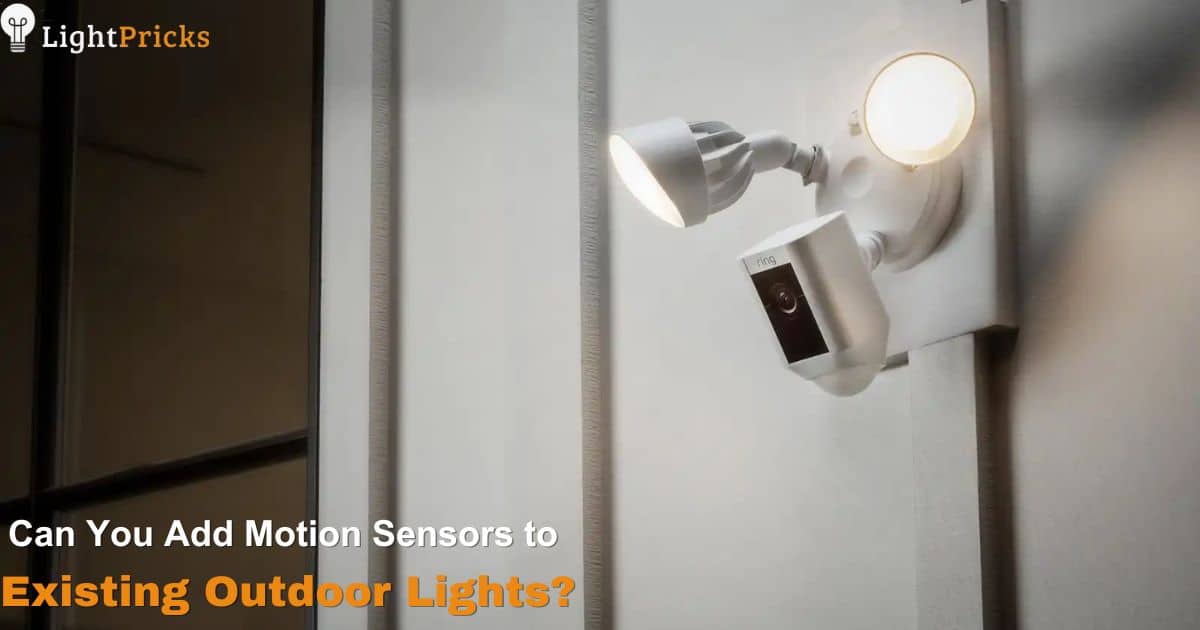Adding motion sensors to your existing outdoor lights is an excellent way to upgrade your lights to be more convenient, secure, and cost-efficient. But before installing sensors, you need to determine if your current fixtures are compatible. You also need to understand the different motion sensor options to choose the best one for your needs. With some handy installation tips, you can successfully add motion-activation to your external lighting.
Determining Compatibility With Your Existing Outdoor Lights
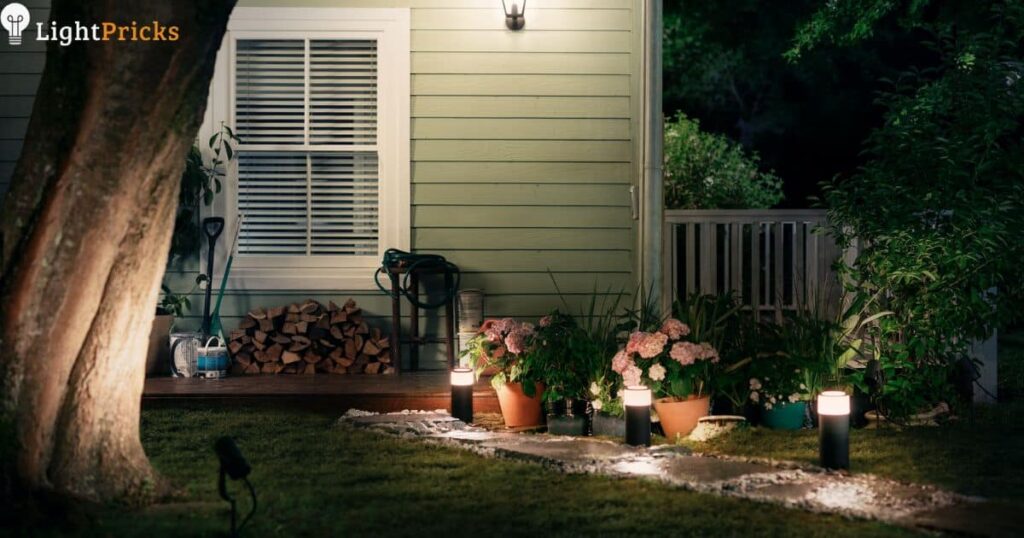
The key factors that determine if your existing outdoor lights can work with motion sensors or will need full replacing include:
- Bulb Type: Most motion sensors are designed to work with LED, CFL, halogen, or incandescent bulbs. If your current lights use less common bulb types, they may not be compatible.
- Wiring and Power Source: Fixtures wired directly to a junction box are the easiest to adapt. Solar lamps or low voltage lighting may not work with sensors requiring a 120V AC power source.
- Light Housing: Ensure fixtures are rated for the wattage of your sensor module or bulbs. Also consider size – large floodlights typically offer better compatibility than smaller accent lighting.
- Controls and Circuits: Some modest rewiring may be needed to integrate sensors properly depending on current switch set-up. Outdoor outlets/receptacles allow for easiest installs.
Here is a compatibility overview for common outdoor lighting:
| Lighting Type | Motion Sensor Compatibility | Notes |
| Porch Lights | High | Standard wiring and bulbs make integration straightforward |
| Floodlights | High | Choose weatherproof sensors rated for floodlight wattages |
| Lamp Posts | Medium | Ensure adequate fixture height and size |
| Accent/Landscape Lighting | Low | Often low voltage or alternate bulb types; replace entire unit instead |
| Solar Garden Lights | Low | Must fully replace as sensors require consistent AC power source |
As shown in the table, porch lights, floodlights, and lamp posts generally offer the highest compatibility for easy motion sensor add-ons. But landscape lighting and solar lights often need full unit replacements to integrate motion activation.
Understanding Your Motion Sensor Options
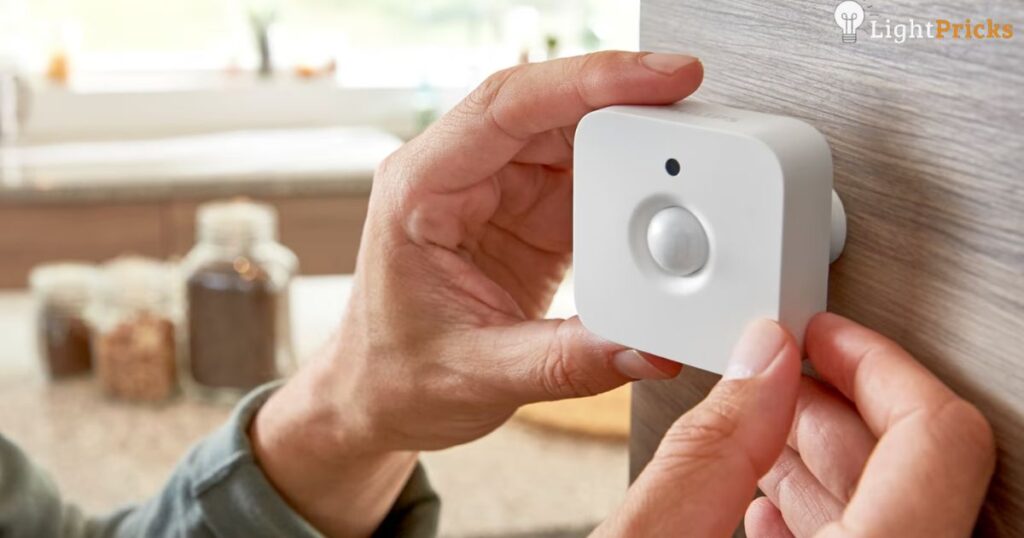
The two main categories of motion sensors are integrated fixtures with built-in sensors or sensor modules designed to mount onto existing wiring:
- Integrated Fixtures: These single-unit lights have internal motion sensors to trigger the bulb directly and integrate controls. All components are housed in one weatherproof casing for straightforward all-in-one installation requiring only mounting and wiring like ordinary lights.
- Sensor Modules: External sensor accessories affix over existing wiring boxes near lights to detect motion and activate a circuit to external fixtures. This provides flexibility for use with a variety of different light types but involves a more complex install process.
Within these categories, there are two predominant sensor technologies:
Passive Infrared (PIR): Detects heat signatures and infrared radiation from bodies in motion. High sensitivity but prone to false triggers from heat sources.
Ultrasonic/Microwave: Transmits high-frequency sound waves or microwave pulses to identify movement detecting returned signals. More precise than PIR but higher cost.
When selecting products, key features to evaluate include:
- Detection Range and Angle: Match to size of area needing coverage. Wide 140-180?? angles suit most applications. Long 50+ foot ranges available for large areas.
- Light Duration: 1, 5, 20 minute and always-on settings after motion detection. Consider your needs vs potential annoyance to neighbors.
- Sensitivity Settings: Adjustments for detection precision from different distances/approach angles to reduce unwanted activation from small animals etc.
- Manual Override Options: To be able to turn lights on regardless of motion when desired. Handy for testing and temporary situations.
- Day/Night Sensor: Only turns lights on from darkness for better energy savings.
- IP Ratings: Ensure weatherproofing and water ingress protection for long outdoor operation. Look for IP65 minimum.
After selecting components, careful installation is required for robust and reliable operation.
Installation Tips and Process Overview
The key steps to add motion sensors are:
- Turn off power supply and mounting existing lighting.
- Affix sensor hardware over supply wires near light housing as per instructions.
- Adjust angle and rotate sensor module to cover required motion detection zone.
- Connect wiring between sensor and lamps appropriately.
- Turn power back on to test motion activation initially during day using override mode.
- Confirm night time operation activates properly without false triggers.
- Make any adjustments to settings or positioning to finely tune operation.
Some tips for smooth installation:
- Use wire nuts to connect sensor and light wiring properly.
- Mount sensors vertically to allow moisture drainage preventing shorts.
- Avoid aiming sensors at sources of heat or sunlight that can cause false daytime triggering.
- For floodlights, adjust side-to-side rotation rather than just angle to maximize coverage.
- Placing above 8 ft viewing height helps reduce unwanted activations from smaller pests and objects.
- Test walk the detection zone after install to ensure proper triggering from 20-30 feet away.
With compatible existing lights or suitable new integrated options, adding motion sensors for automated control is a very achievable weekend project for most homeowners. The key is evaluating your specific lighting fixtures, researching compatible components with desired features, preparing for wiring adjustments, and testing for precise automated control. Soon you can enjoy hands-free convenient and energy-saving outdoor lighting.
Why Should You Incorporate Motion Sensors into Outdoor Lighting? Explore the Advantages
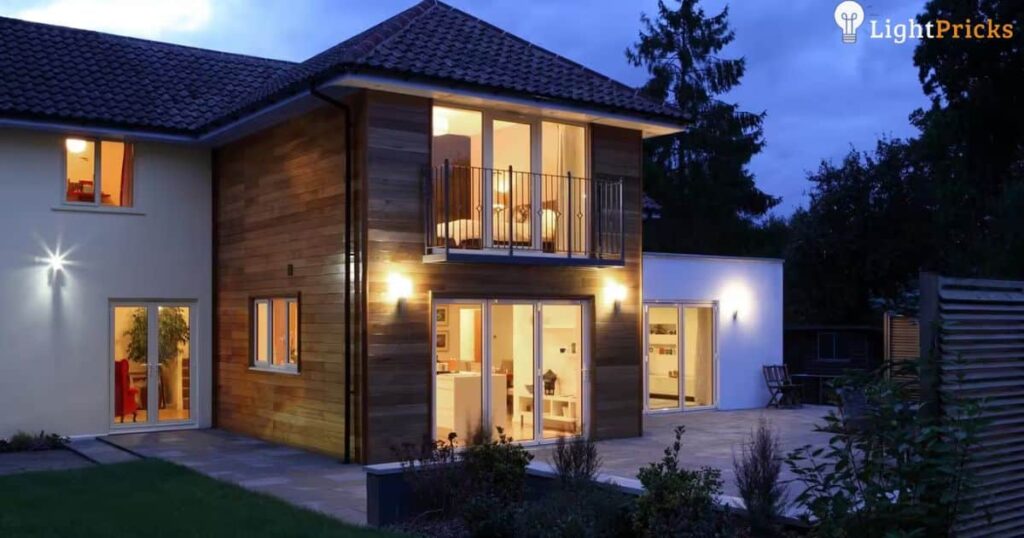
Upgrading outdoor lights with motion sensor activation provides some excellent benefits that make the effort and expense worthwhile:
1. Convenience – Hands-free operation is extremely convenient day or night. Never worry about manually turning lights on and off regardless of tasks. Great when carrying groceries, bags, kids, pets etc.
2. Lighting Flexibility – Many sensors offer adjustable light duration settings from 1, 5, to 20 minutes after motion. Maximizes functionality for any activity whether just taking out trash quickly or spending prolonged time grilling or relaxing on the patio.
3. Energy Saving – Smart sensors mean lights only turn on when needed as you approach, shutting off shortly after. This can reduce outdoor energy usage from lighting by up to 80% according to Florida Solar Energy Center testing. This saves electricity costs and environmental impact.
4. Enhanced Security – Bright floodlights startlingly activating from motion can startle intruders both as a visual deterrent but also by alerting you audibly. Useful for protecting garages, storage sheds or private gates/accesses.
5. Safety & Visibility – Automatic light activation eliminates risk of descending dark stairways or navigating paths after returning home at night. Especially during power outages from storms, emergency backup lights with sensors remain invaluable.
6. Lower Long Term Maintenance – Advanced LED bulbs can last over 25 times longer than incandescent alternatives. Combined with less frequent switching cycles from motion sensors, you’ll save greatly on replacement bulb costs over 10-15 years.
To showcase the array of benefits possible, here is an overview comparison table highlighting why incorporating motion sensors can make your exterior home lighting smarter:
| Benefit | With Motion Sensors | Without Motion Sensors |
| Convenience | Hands-free activation on approach | Need to physically hit switches (inconvenient when carrying items) |
| Flexibility | Adjustable light duration from 1-20 mins | Fixed operation from switch |
| Energy Savings | Lights only on when needed (~80% less use) | Lights activated manually so likely more usage |
| Security Enhancement | Unexpectedly triggers lights & audible alerts | Ordinary lighting operation |
| Safety & Visibility | Automatic emergency backup lighting | No special backups so potentially dark |
Based on this summary, the advantages of upgrading clearly showcase the value for money and return on investment from incorporating motion sensors for most homes. Give your exterior lighting an automated enhancement to enjoy the latest innovations in smart technology convenience and efficiency.
Can I Convert Floodlights to be Motion Sensing?
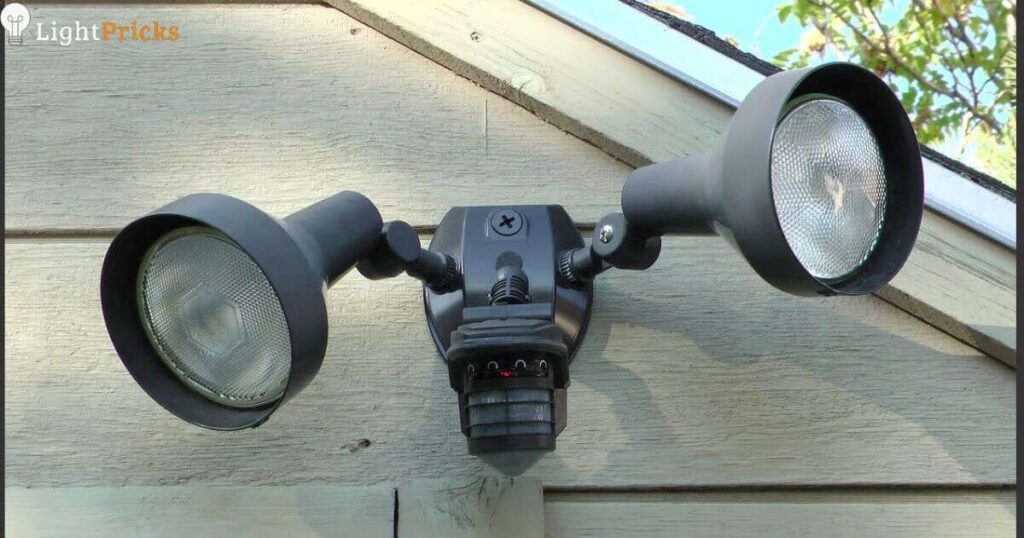
Outdoor floodlights are prime candidates to upgrade with motion activation. Their existing bright, broad area coverage combined with automation provides major benefits. Here are insights into converting existing floods lights:
Wiring Considerations
Most standard 120-277V hardwired floods lights allow motion sensors to be added via accessory modules. Sensors affix near housings tapping into live wires to trigger circuits controlling installed bulbs remotely. This differs from low voltage landscape lighting requiring full fixture replacing.
Housing Compatibility
Verify adequate interior size and construction first. Quality metal cast or durable polymer housing with conduit access, ample wiring room and appropriate heat ventilation aids modification. Cheap thin plastic may melt or crack when adding components. Also ensure reasonable pole/wall mount height.
Functionality Choices
Passive infrared are most common, detecting body heat signatures in motion up to 70 ft away. Field of view is adjustable, commonly 80 to 240 degrees. Ultrasonic sensors utilize high frequency sound waves reflected back from movement up to 25 ft away but avoid false daylight triggering better.
Performance Longevity
For wet locations, ensure waterproof IP65 ratings minimum so humidity won’t damage motion components prematurely. Quality GE, Utilitech or Heath-Zenith sensors handle operation down to -40??F as well.
DIY Complexity
Basic wiring knowledge helps but conversion isn’t typically complicated. Power shut off first for safety. Match same wire count to corresponding terminals then reconnect bulbs. Adjust positioning and ranges as needed. That’s it!
Project Costs
Sensors range from $20 – $100 depending on detection technology, features and brand. LED flood light bulb upgrades recommended simultaneously so automation maximizes energy efficiency. Expect payback through energy savings within 12-24 months.
Frequently Asked Questions
How do you wire a motion sensor to an existing light?
Turn off power, connect sensor wires to corresponding light wires, typically matching black (live), white (neutral), bare copper (ground) wires, then turn power back on.
Can you add a dusk to dawn sensor to outdoor lights?
Yes, dusk-to-dawn light sensors can screw into existing outdoor light fixtures to automatically activate lights at night and deactivate in the morning.
Can you buy a sensor for an outdoor light?
Yes, there are many standalone outdoor motion sensor accessories available to integrate lighting automation and control.
How do you install an outdoor motion sensor light?
Mount the fixture pointed towards the desired coverage area, connect wires to power supply, adjust settings like duration and sensitivity, then test motion triggering to finalize positioning.
Conclusion
Upgrading exterior lighting by incorporating motion sensors is an increasingly popular home improvement project enabling convenience, security and savings. Determining compatibility depends chiefly on your existing bulbs, wiring and fixtures. Porch lights, lamp posts and flood lights generally allow straightforward sensor add-ons while landscape lights often require full unit replacements.
Key considerations are detection range/angle, light duration settings, sensitivity adjustments and override capabilities. Installation involves wiring connections, positioning adjustments and thorough testing at night.
For most homes with suitable outdoor lighting infrastructure, adding motion activation is a worthwhile weekend DIY endeavor for enhanced automation, safety and function. With creative vision, you can cost-effectively transform traditional lighting into modern, convenient motion sensor fixtures.


